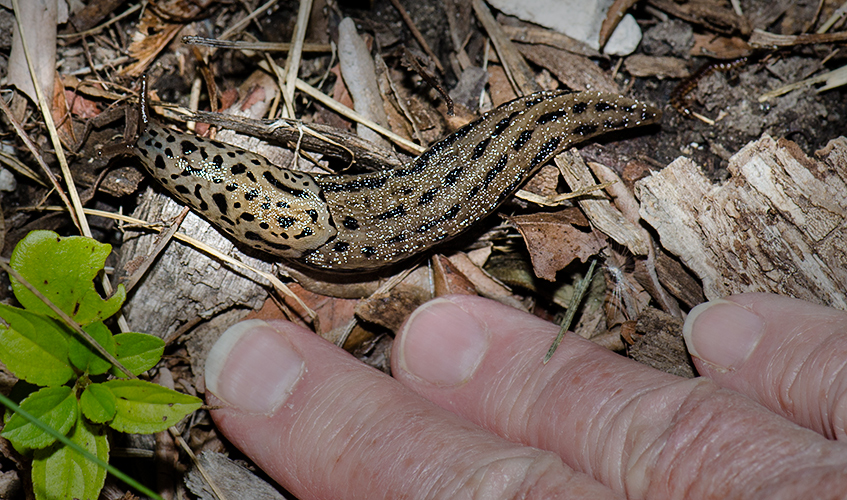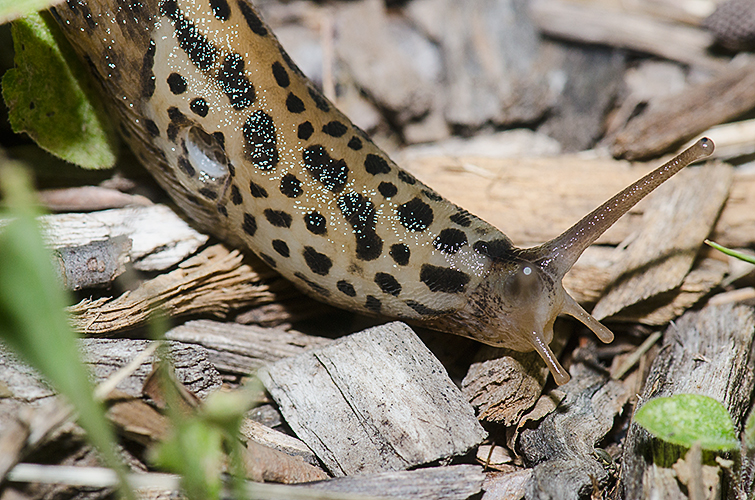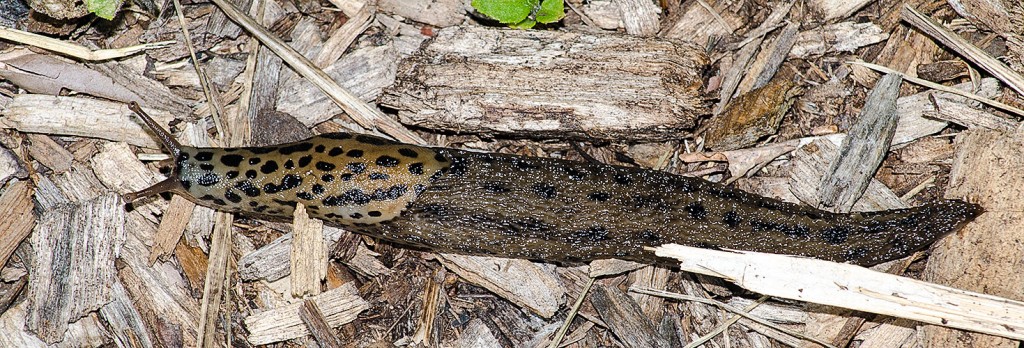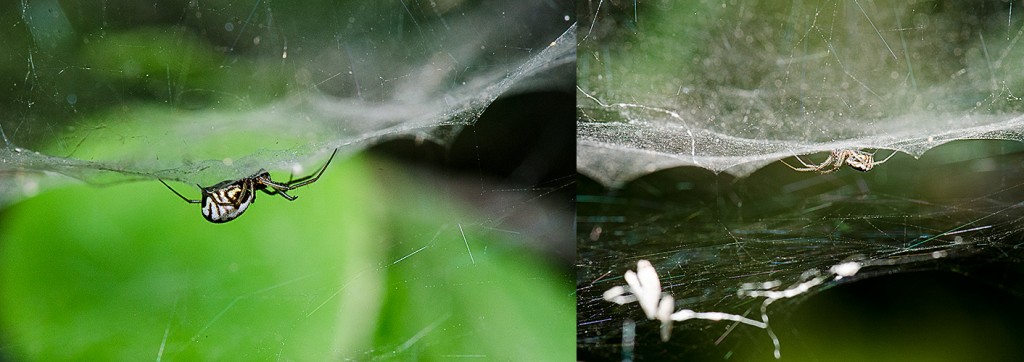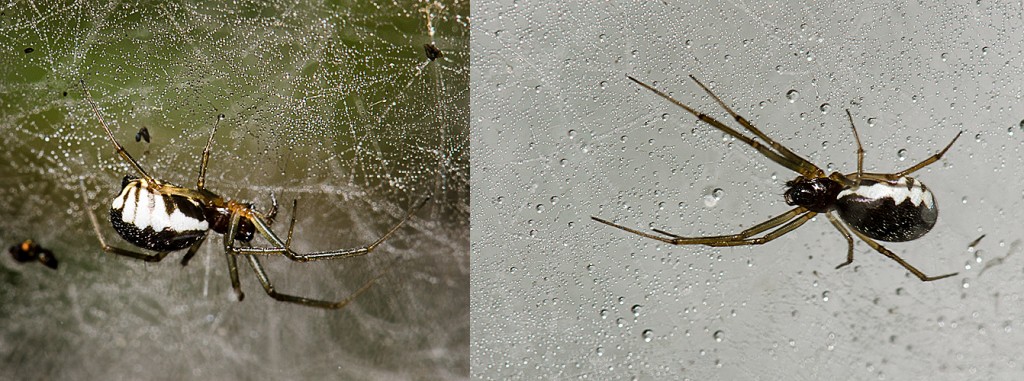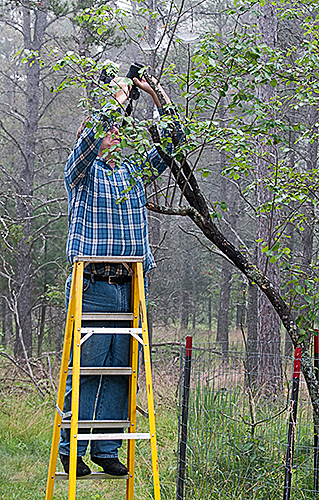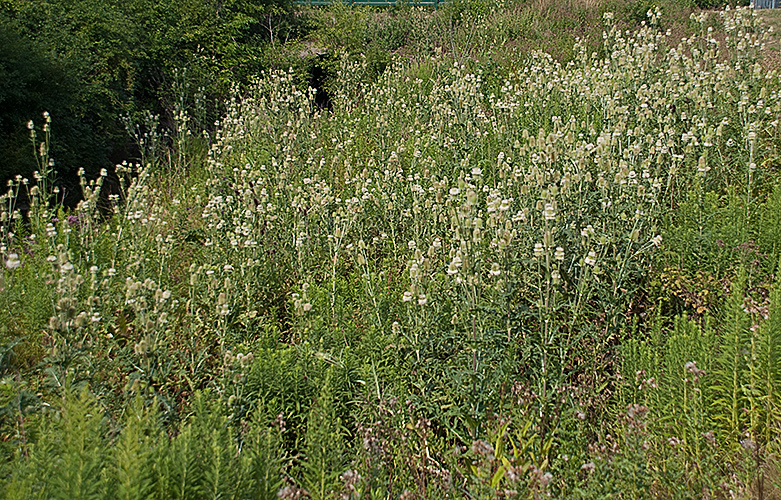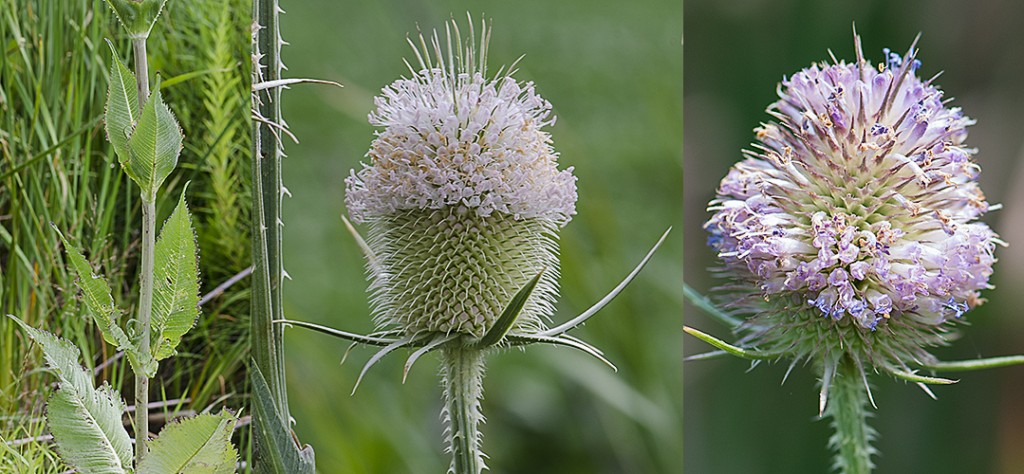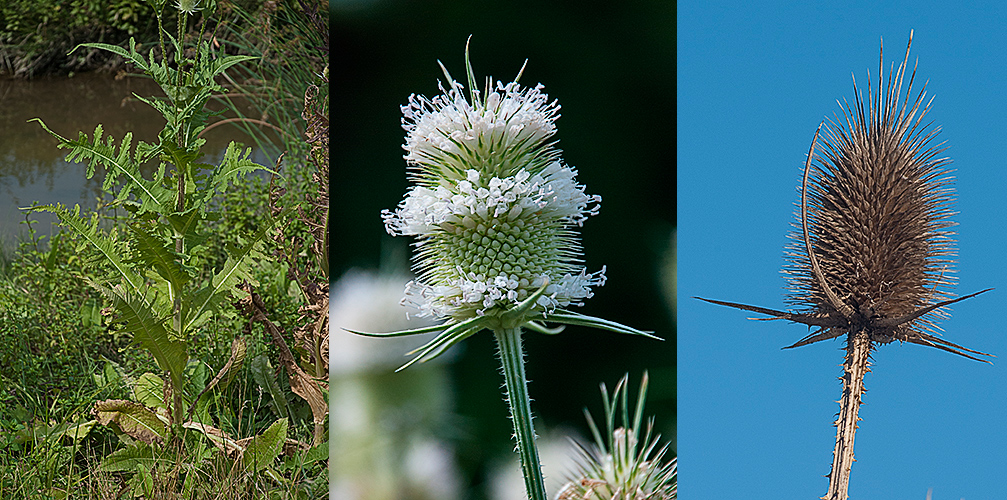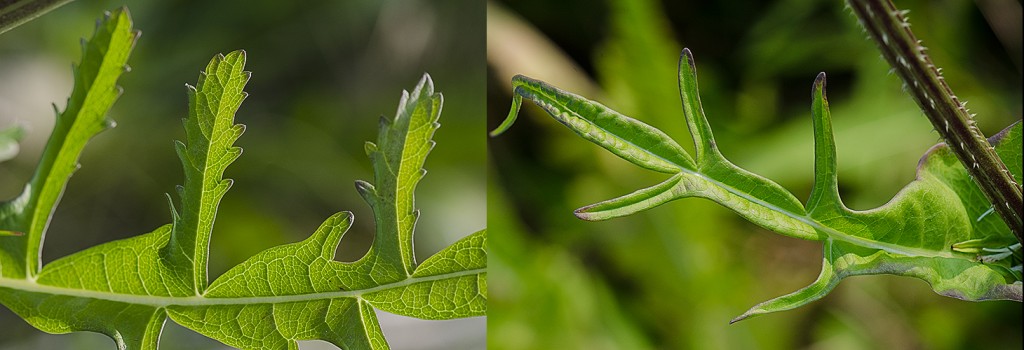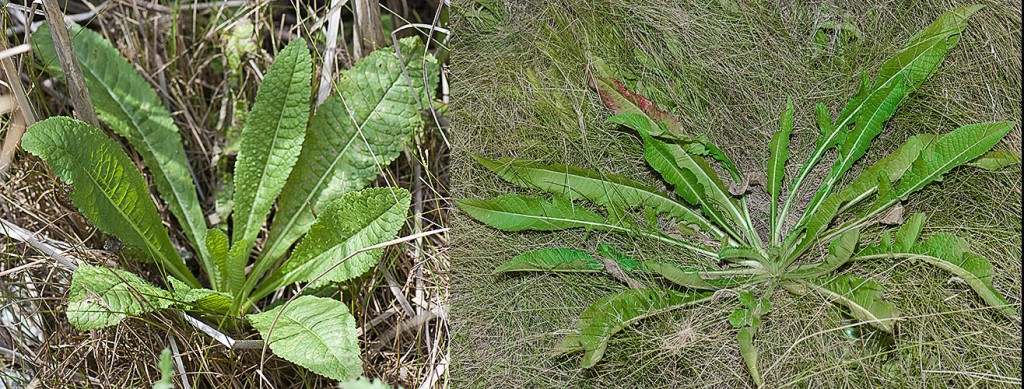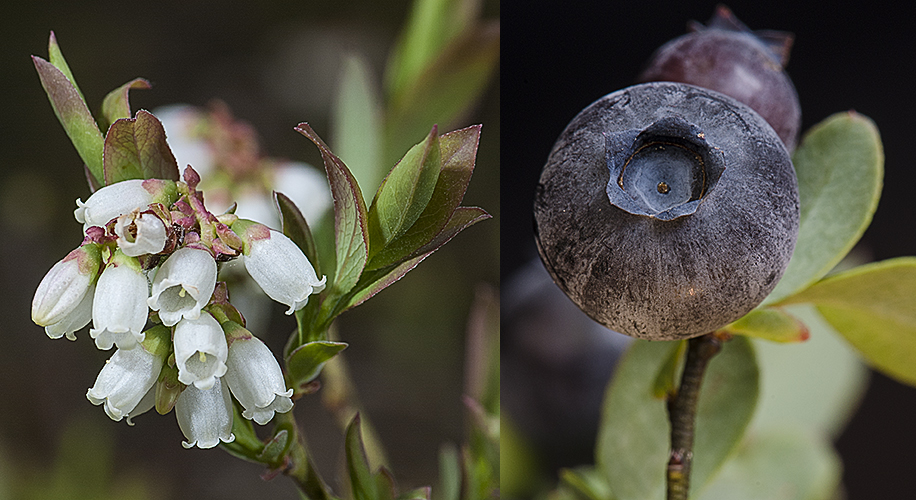
Low Sweet Blueberry
Flowers and Fruit
Low Sweet Blueberry (Vaccinium augustifolium) is the common species we see in the sandy uplands near Grayling, Michigan. It has clusters of bell-shaped flowers in June and the fruit ripens in July. The bushes are short, less than 3dm [1 foot] tall and it is hard on my back to bend for hours picking berries. Wild blueberries are smaller but sweeter than their domestic cousins.
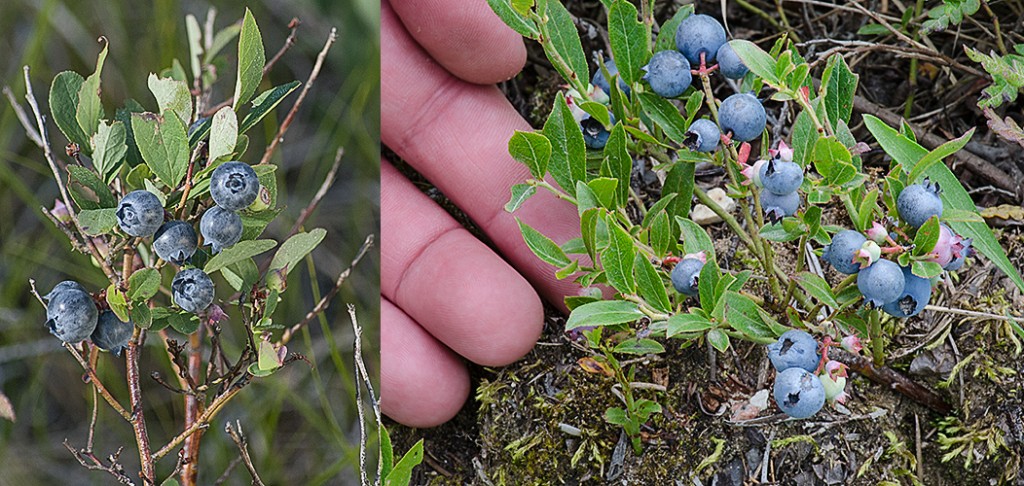
Low Sweet Blueberry
In years when a hard frost occurs during flowering time or the spring is too dry blueberries yield little if any fruit. Some years the only plants bearing fruit are at the edges of fields that have tall trees surrounding them and protecting the plants from frost. In a dry year, we sometimes find a few berries on bushes growing in a depression that collects some water. In a good berry year, there are acres of fruiting plants. Low Sweet Blueberries are deep-rooted and survive wildfires. The best picking is often two to five years after a burn. Competing plants are gone, sunlight reaches the plants, and the sterile sand is enriched.
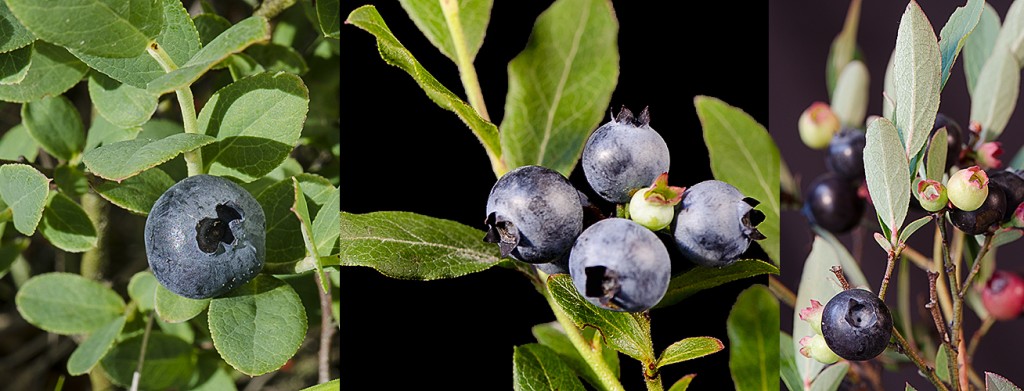
Low Sweet Blueberry Fruit showing color variations
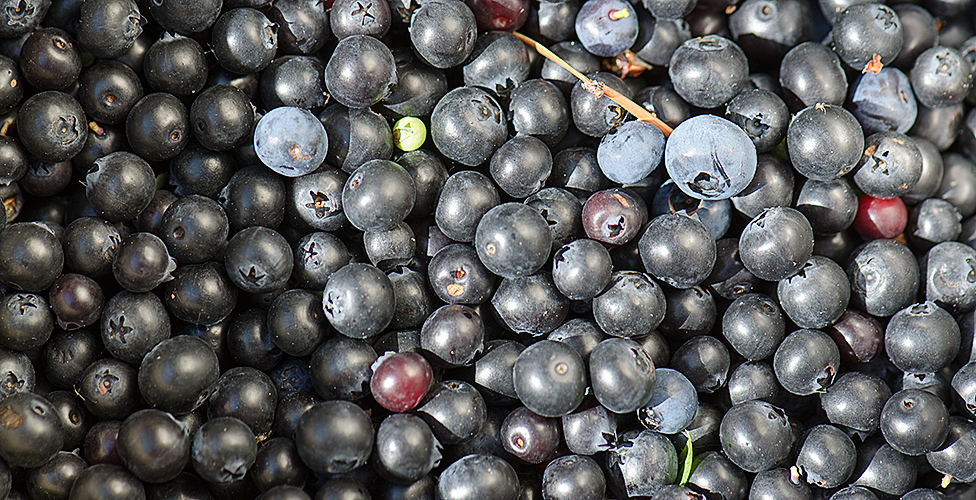
Low Sweet Blueberries in pail showing fruit color variations
Low Sweet Blueberries form a variable species complex. Berries are blue with a solid glaucous bloom, or purple with a gray striped bloom, or shiny black. The leaves are green or glaucous green. The fruit types do not breed true from seed. Shiny black fruit can produce offspring with blue fruit. The extreme plants are distinctive and have been named as separate species or varieties of V. augustifolium but appear to me to be only forms. I know of no pure stands containing only one fruit type. It seems best to treat this as a single variable species.
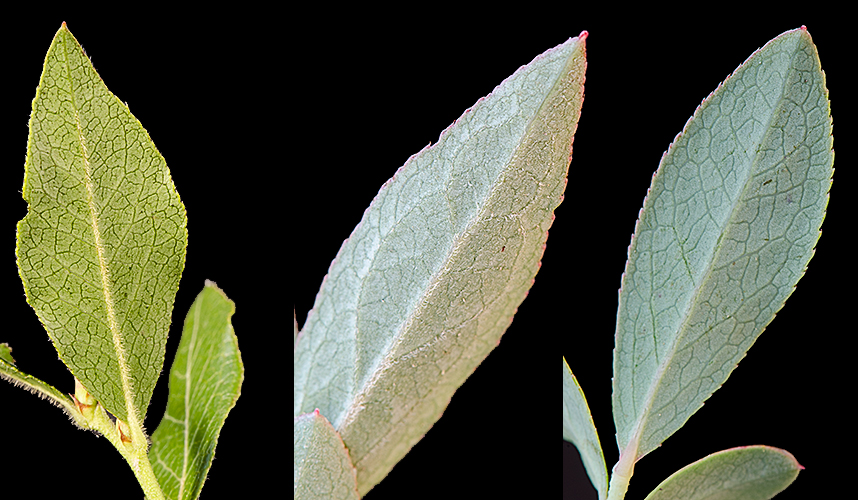
Low Sweet Blueberry Undersides of leaves
Difficulties in classifying this species however do not distract from my pleasure of eating the fruit. A handful of blueberries eaten on a hike is a treat. Blueberry pancakes and pies are a highpoint of my summer. My family has a scale for rating the quality of the blueberry crop. A bad year is when less than a handful is found. Next is a pancake year (1 cup full), a pie year (4 cups), and then an abundant year. In an abundant year, such as this year, you pick enough for pancakes, pies, and to freeze a few for a rare winter treat.

Blueberry Pancakes and Pie
The short bushes are hard to pick from but it is worth the work. Get out while the picking is still good but watch out for bears.
Copyright 2014 by Donald Drife
Webpage Michigan Nature Guy
Follow MichiganNatureGuy on Facebook

